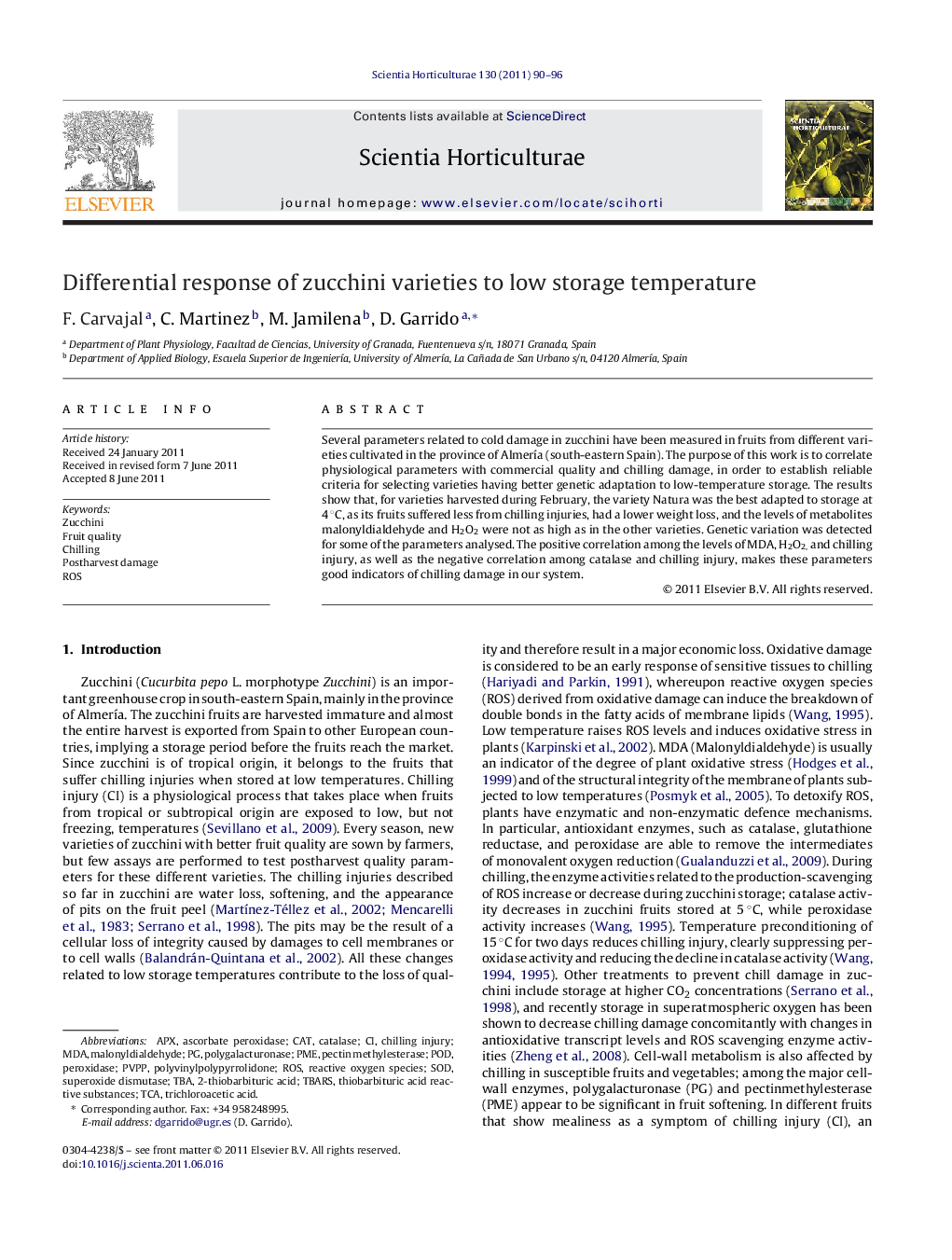| Article ID | Journal | Published Year | Pages | File Type |
|---|---|---|---|---|
| 4568100 | Scientia Horticulturae | 2011 | 7 Pages |
Several parameters related to cold damage in zucchini have been measured in fruits from different varieties cultivated in the province of Almería (south-eastern Spain). The purpose of this work is to correlate physiological parameters with commercial quality and chilling damage, in order to establish reliable criteria for selecting varieties having better genetic adaptation to low-temperature storage. The results show that, for varieties harvested during February, the variety Natura was the best adapted to storage at 4 °C, as its fruits suffered less from chilling injuries, had a lower weight loss, and the levels of metabolites malonyldialdehyde and H2O2 were not as high as in the other varieties. Genetic variation was detected for some of the parameters analysed. The positive correlation among the levels of MDA, H2O2, and chilling injury, as well as the negative correlation among catalase and chilling injury, makes these parameters good indicators of chilling damage in our system.
► Postharvest quality and chilling injury have been measured in fruits zucchini. ► 5 varieties cultivated in Almería (south-eastern Spain) have been used. ► One variety, Natura, is the better adapted to cold conservation. ► High MDA and H2O2 levels, and low catalase activity are indicative of chilling damage. ► Genetic variation is found in the varieties for the parameters analysed.
